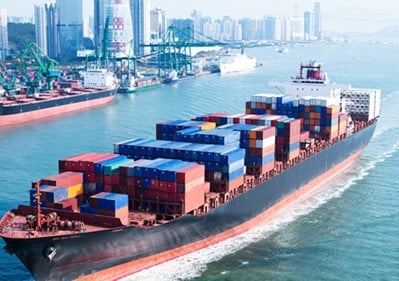Huge container vessels are the backbone of the shipping industry. When we think of cargo ships, the picture that pops up in our minds are gigantic steel constructions that sail on the blue water. That picture is amazing! What about the other side of that picture? What happens to those amazing steel constructions at the end of their time? There are many different methods for disposing of ships;
- Hulking
- Ship Breaking
- Use as an artificial reef
- Donation
- Sale for re-use
- Floating (or drydock) storage
- Deep water sinking
Ship breaking is the most common method of ship disposal, which is a type of ship disposal involving the breaking up of ships for scrap recycling. Ship breaking allows materials from the ship, especially steel, to be recycled. Equipment on board the vessel can also be reused. There are also other ways to dispose of the ship such as, floating, use as an artificial reef, deep water sinking, or hulking.
Because of the labor cost and less environmental regulations on ship breaking, most of the ship breaking yards are located in developing countries such as Gadani in Pakistan, Aliaga in Turkey, and Chittagong in Bangladesh.

Bangladesh
Chittagong Ship Breaking yard is the world’s second-largest ship breaking area. The ship breaking takes place in the Fauzdarhat area along the 11 mills Sitakunda coastal strip, 20 12 mills north-west of Chittagong.
China
Changjiang Ship Breaking yard located in Jiangyin, China
India
Alang Ship Breaking Yard- its beaches have become a major worldwide centre for ship breaking. The yards are located on the Gulf of Khambat, 50 kilometres southeast of Bhavnagar.
Pakistan
Gadani Ship Breaking yard
Turkey
Aliaga Ship Breaking Yard-Aliaga yard is the biggest breaking yard in the entire European continent
United States
International Shipbreaking Ltd. Brownsville, TX
The biggest concern about ship breaking is the environmental effects of it. Ship breaking leads to high health risks, noxious fumes, environmental pollution and risk of asbestos. In Europe every year 1000 cargo ships are sent for recycling. This has big economical effects on most of the developing countries’ economies. According to the World Bank, in Bangladesh the shipbreaking industry is worth around one billion USD and employs over 200,000 workers. The industry provides nearly 60% of the country’s total steel demand.
Today recycling and re-using goods and products has become an important requirement, and green ship recycling is becoming one of the main priorities today.




